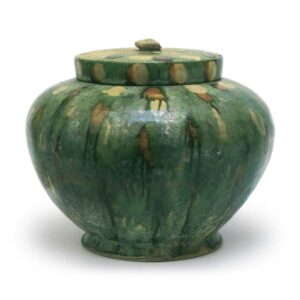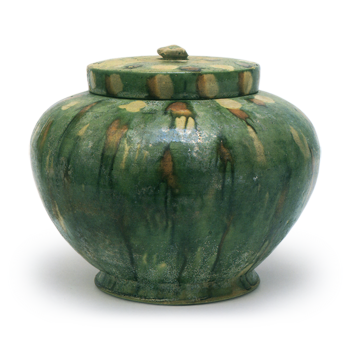
Sansai glazed ware: covered jar.
Excavated near Tsuyama City, Okayama Prefecture
8th century
Total height 21.3cm, mouth diameter 13.6cm, body diameter 25.3cm, base diameter 14.7cm
Important Cultural Property
Kurashiki Archaeological Museum
According to the box, it was excavated from a burial mound near Tsuyama City in 1904.
This rare sansai jar became known last year when it was returned to the possession of the Kurashiki Museum of Archaeology. Although the circumstances of its excavation are not necessarily clear, both the body and lid are in perfect condition, and it is likely that it was buried as a cremation warehouse bone implement. The short, upright mouth and neck, slightly stooped body, and the high base with a strong base suggest that it was made in the mid-8th century.
The base is made of a dense grayish-yellowish-white clay, and the thinly ground body shows exquisite workmanship. The Sansai glaze is brown glazed at the intersections of the green glaze overlaid with a continuous arc pattern, which is commonly used in the same period.



